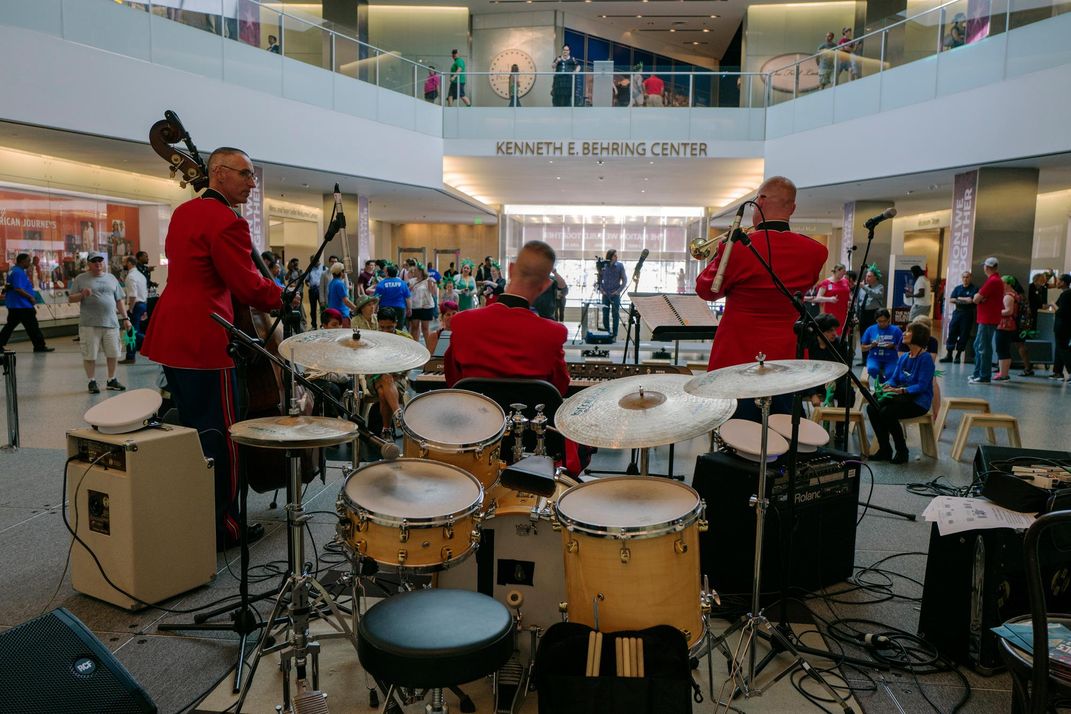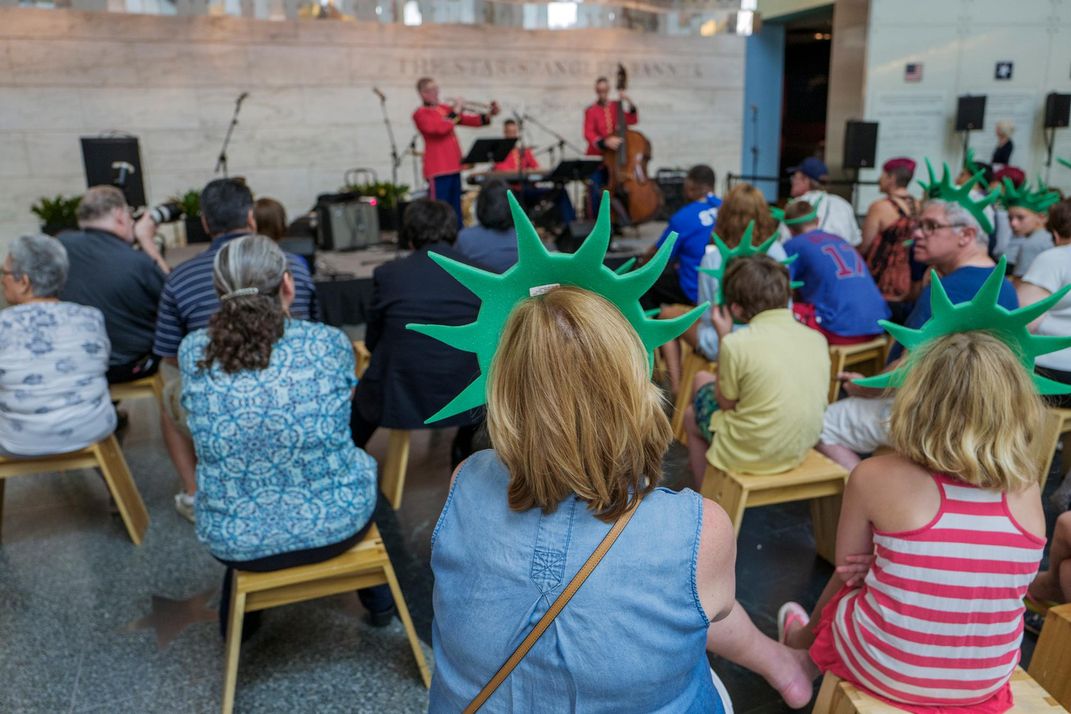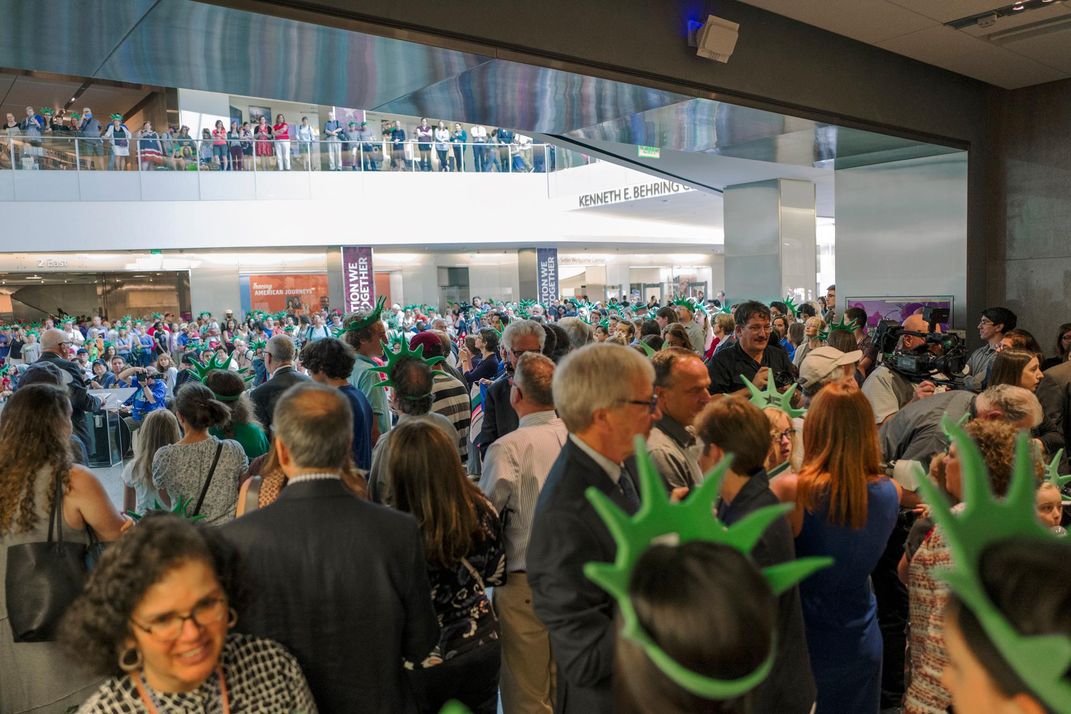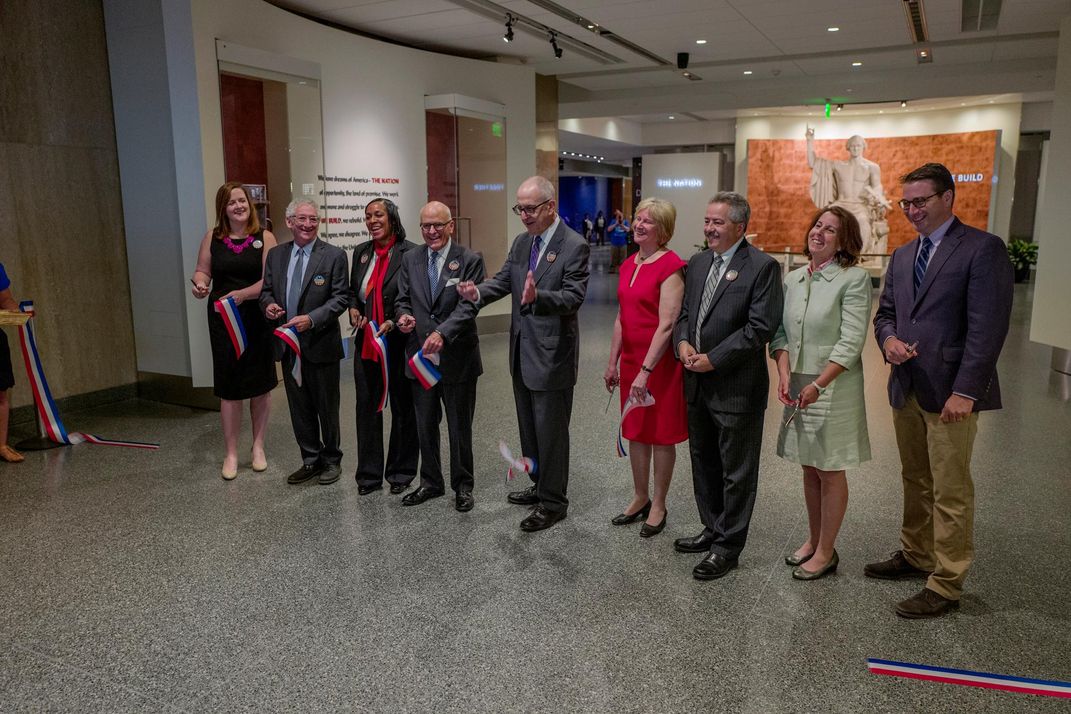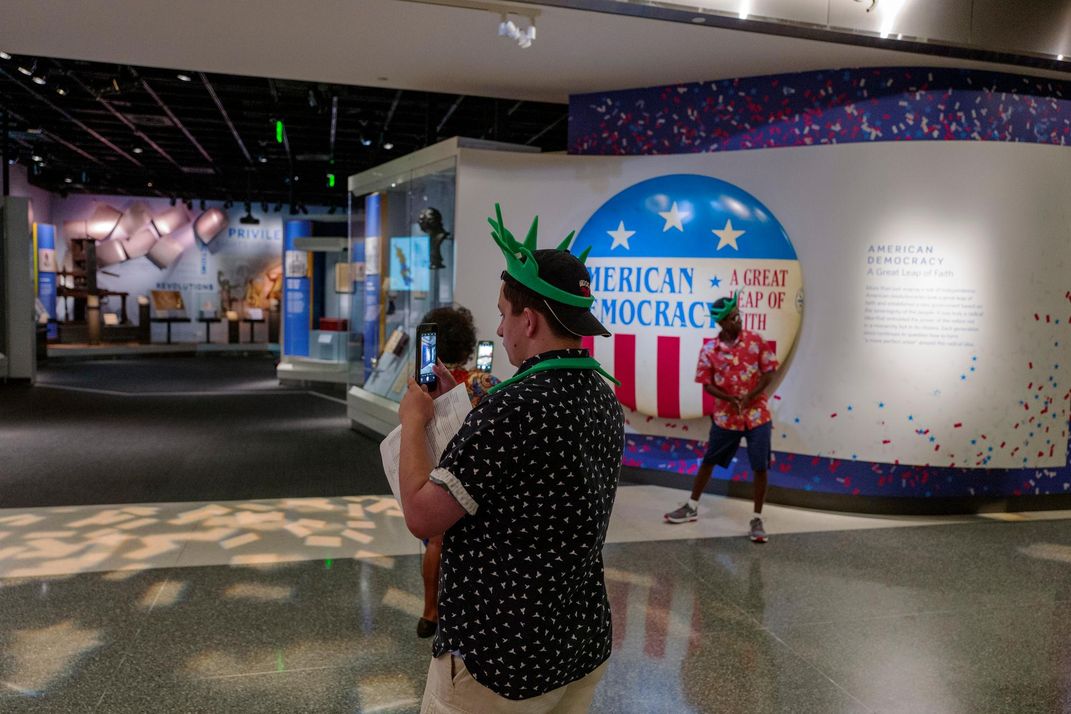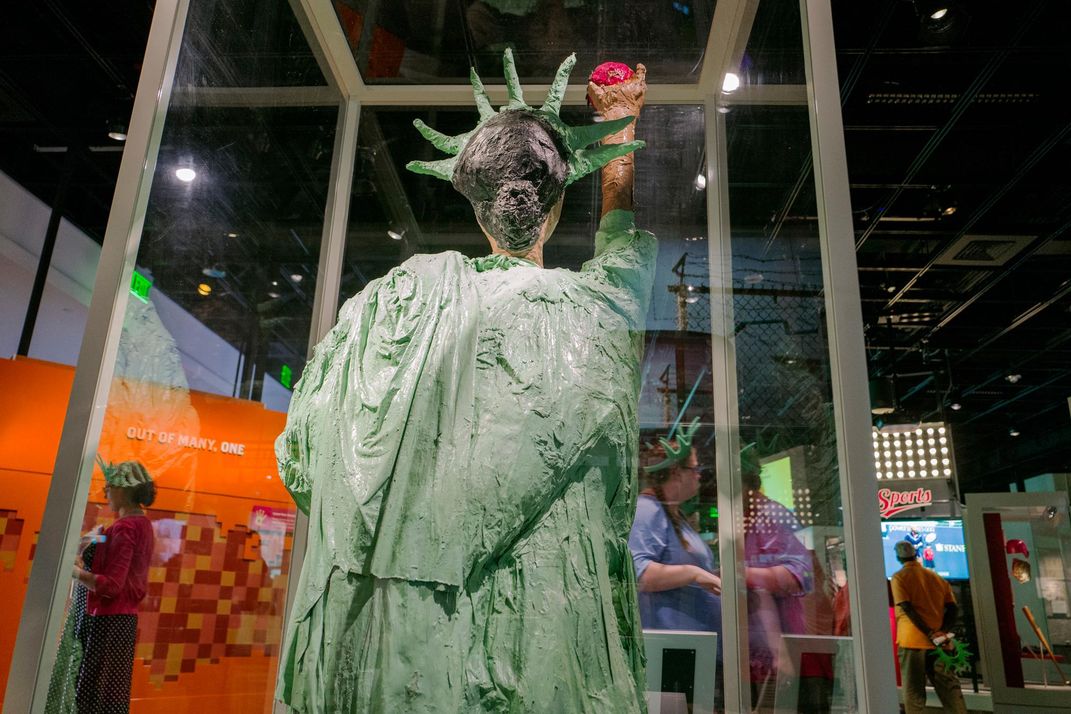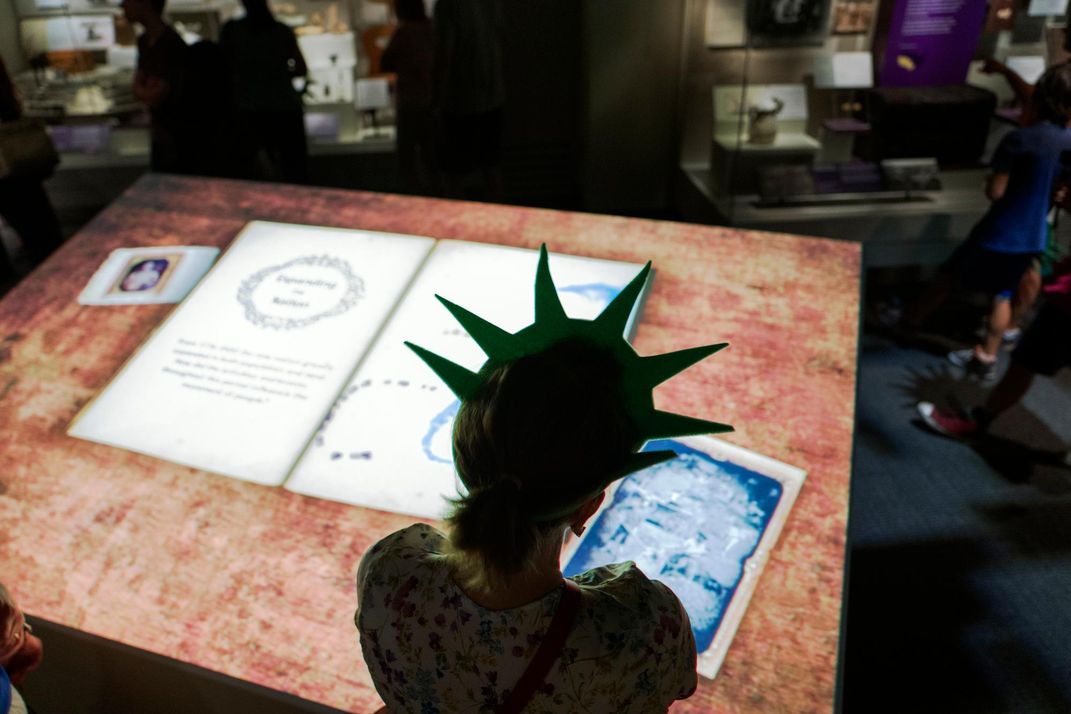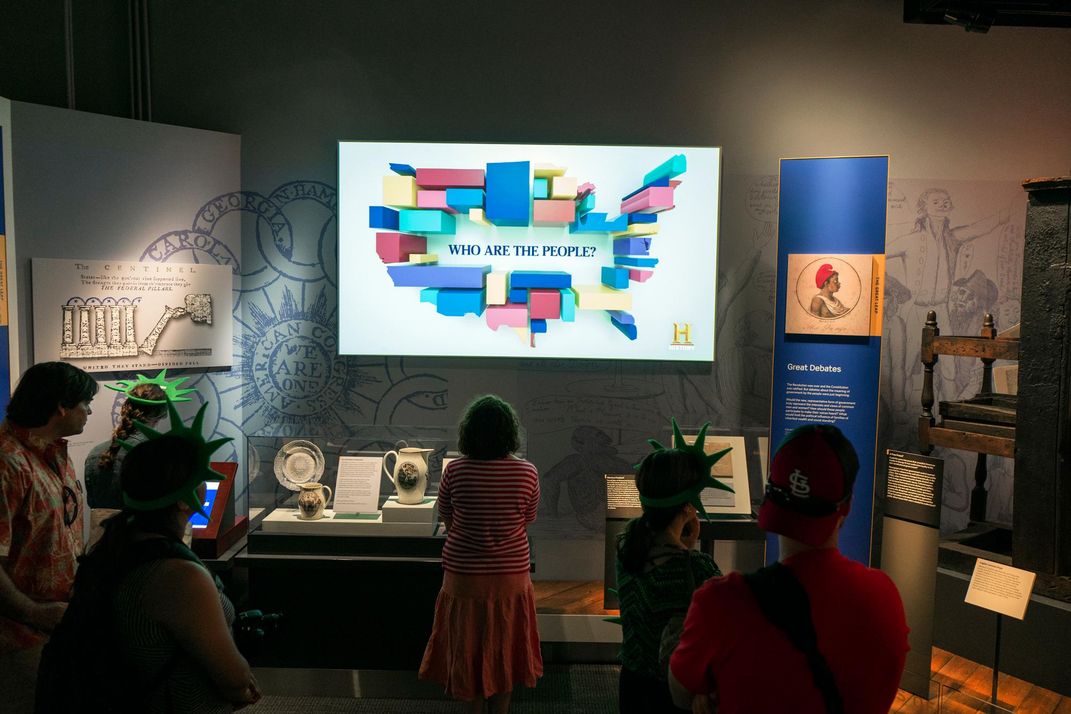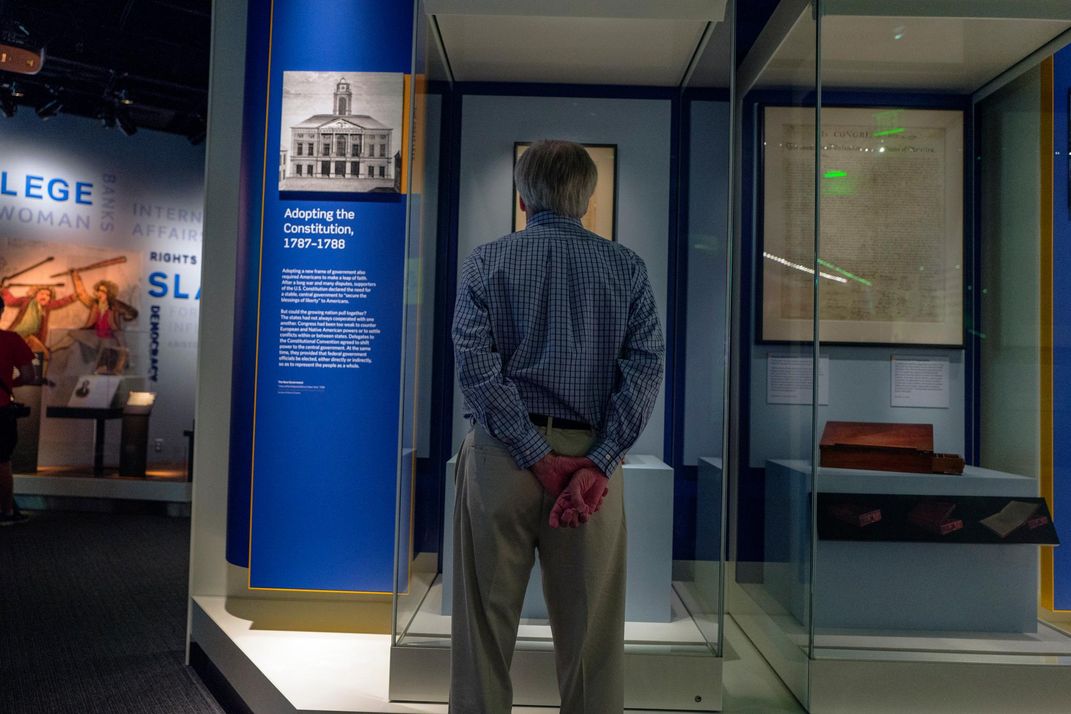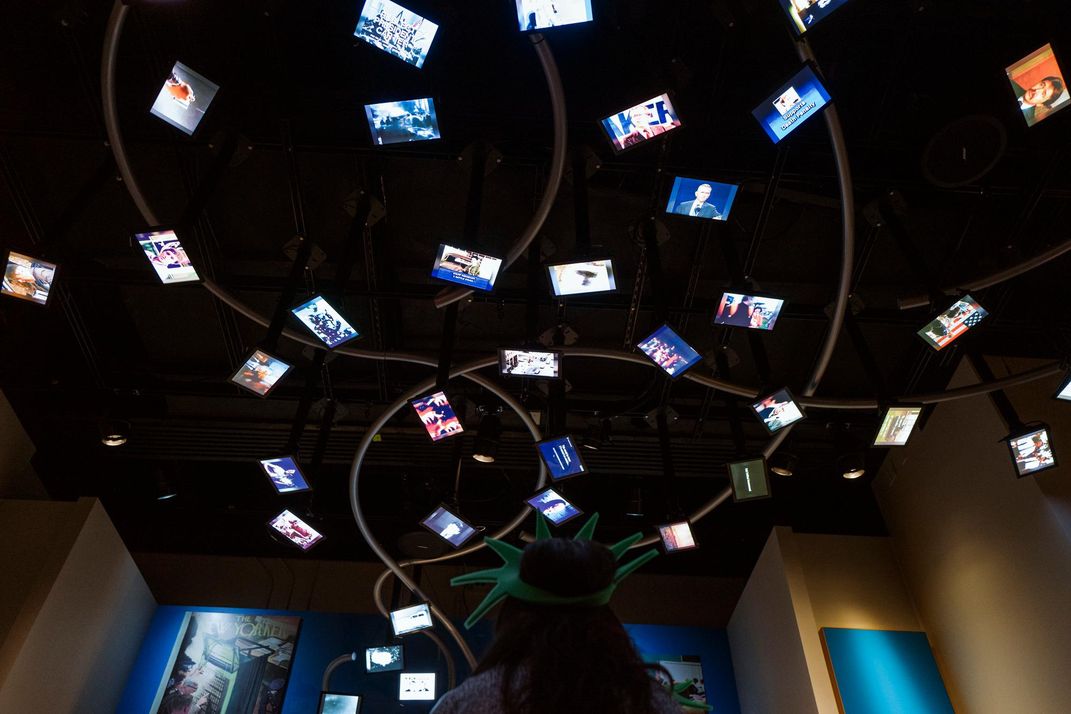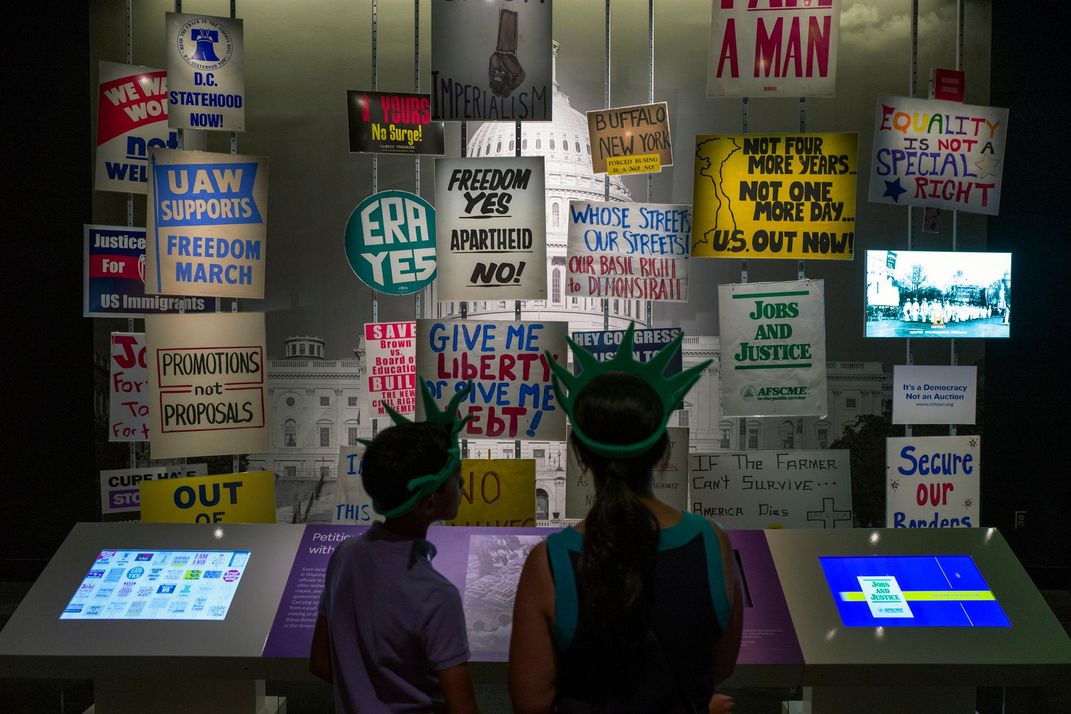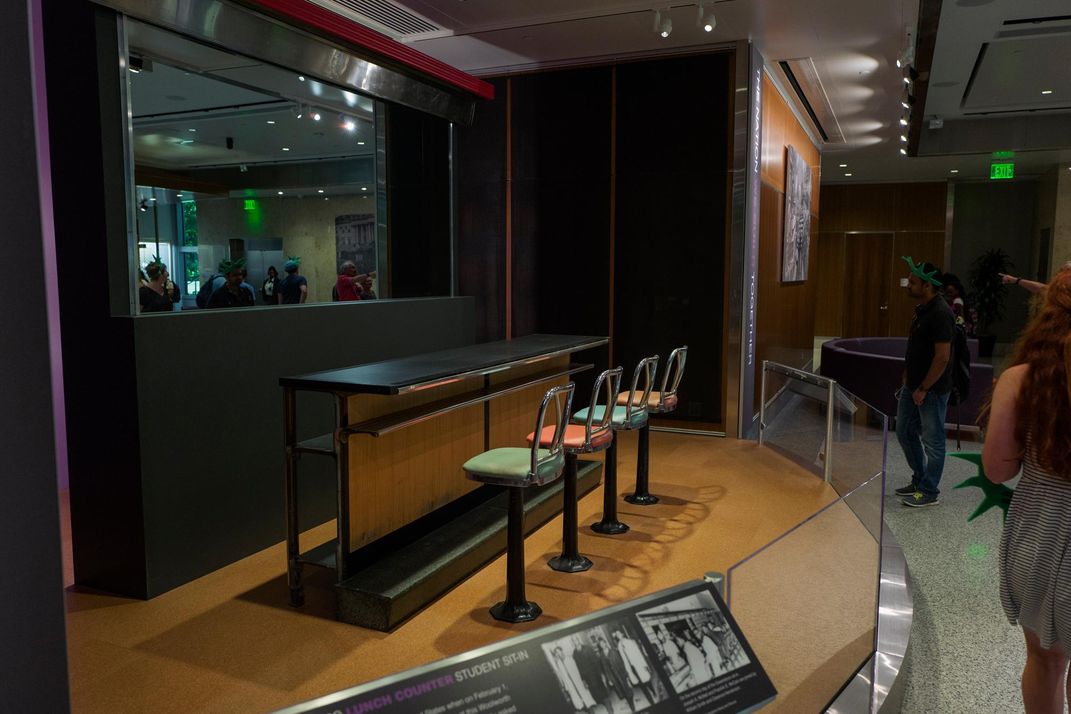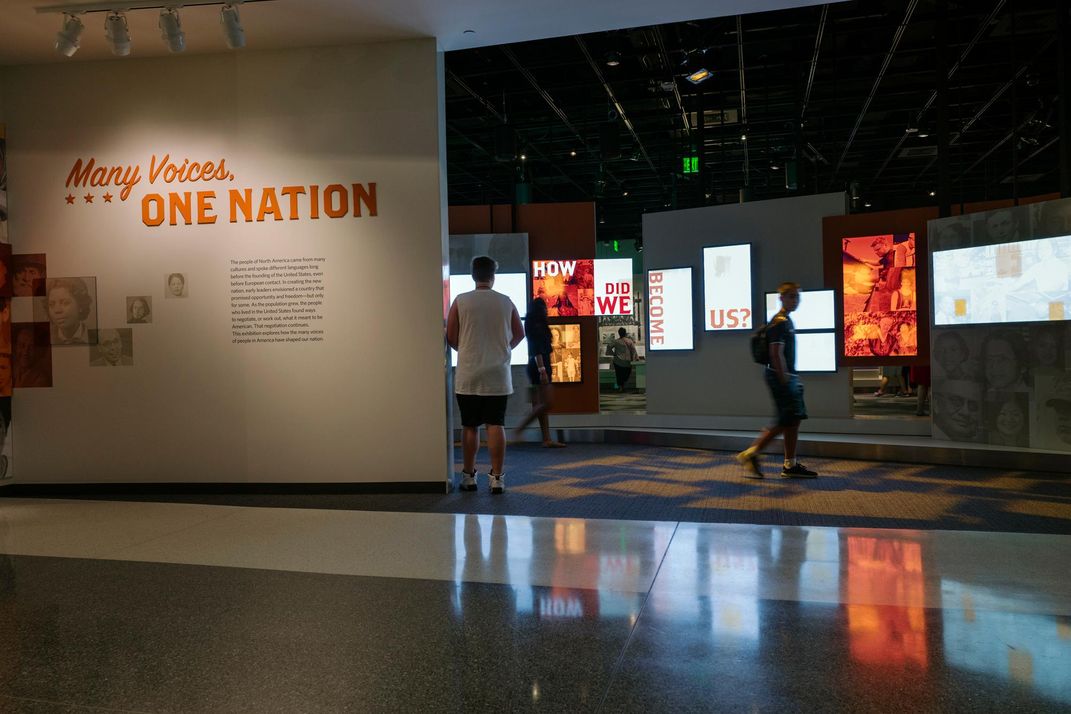New Exhibition Asks “What Kind of Nation Do We Want to Be?”
The American History Museum opens a trio of timely new shows on democracy, religion and immigration
At a grand opening celebration Wednesday, June 28, the National Museum of American History unveiled another portion of its ongoing west wing renovation efforts. With the promise of new artifacts, hands-on activities, performances from the U.S. Marine Corps Jazz Trio, a 9-foot LEGO-built Statue of Liberty, plus many free Statue of Liberty hats, hundreds of summer visitors arrived to take their first peek.
A ribbon was stretched across a long gallery before the 12-ton Horatio Greenough sculpture of George Washington. Curators, staff and the Smithsonian’s Secretary David Skorton, all with scissors in hands, stood in formation waiting to make the first snips on the red, white and blue ribbon.
A spirited rendition of “When the Saints Go Marching In” erupted from the horn and strings of the U.S. Marine Corps Jazz Trio as the scissors decimated the ribbon and the visitors, wearing the spiked Liberty hats, marched forward to inspect the new exhibitions.
To the left of the partially clad George Washington is the entry to the new show, “American Democracy: A Great Leap of Faith.” The first item to catch a visitor's eye is the recently acquired bust of King George III, the monarch early Americans would defy when they embarked on the audacious experiment creating a government that derived its “just powers from the consent of the governed.”
With the very desk that Thomas Jefferson used to pen the Declaration of Independence as its signature icon, the new show embarks on a complex story of how democracy evolved and the hurdles it faced. Who would count as “the people?” How could the interests of diverse Americans be equally represented? Whose voice had a right to be heard? From the Revolutionary War to today, the exhibition’s artifacts illustrate that these questions still challenge Americans and remain the central struggle in the experiment that is Democracy.
With artifacts like universal suffrage signs, Black Lives Matter placards and memorabilia from the recent presidential election behind glass in a museum, the impression could be that these events are behind us. “We recognize ourselves in these displays,” says the Smithsonian’s secretary David Skorton.
“American society continues to evolve,” he points out. “The Smithsonian plays an important role in the life of this country.”
In the darkened gallery, visitors were craning their necks to the ceiling. With faces illuminated in the dim light by blue and red flashes 81 tiny television screens. The monitors display campaign advertisements, dating from the 1952 Eisenhower-Stevenson era to the most recent. The sound system synchronously cycles through the audio of each, leaving museumgoers binging on the fascinating barrage.
Past the cacophony of televisions and displays of protests is a quieter gallery for the more solemn exhibition entitled “Religion in Early America.” On display is the “Jefferson Bible,” a cut and pasted version that Thomas Jefferson created using a sharp instrument, possibly a pen knife, to create his own account of the Christ story. A 1694 Torah scroll from Shearith Israel in New York, a first edition Book of Mormon and African and Native American religious artifacts paint the complex picture of spiritual America.
The Greensboro lunch counter also makes its return debut in a new setting. Now, the historical artifact where four college students sat down and ignited the Civil Rights Movement is the centerpiece of an activities room designed to inspire visitors to interact with one another. One display urges museumgoers to join hands and create a human chain—the action of hands touching completes a circuit that triggers a recording of folk songs.
On the backdrop of the Greensboro Woolworth counter is a documentary film that recounts the 1960 protest when Franklin McCain, Ezell Blair Jr., Joseph McNeil and David Richmond asked to be served and were refused. When the film fades to black, the screen becomes a mirror that reflects in the window on the opposite wall the jagged architectural outlines of the National Museum of African American History and Culture just across the street.
The last exhibition in this new wing, “Many Voices, One Nation,” endeavors to answer the question of how a nation of individuals becomes one united country. Despite the conflicts that have tested American ideals, the results of the Great Experiment created fertile ground for culture and exchange.
